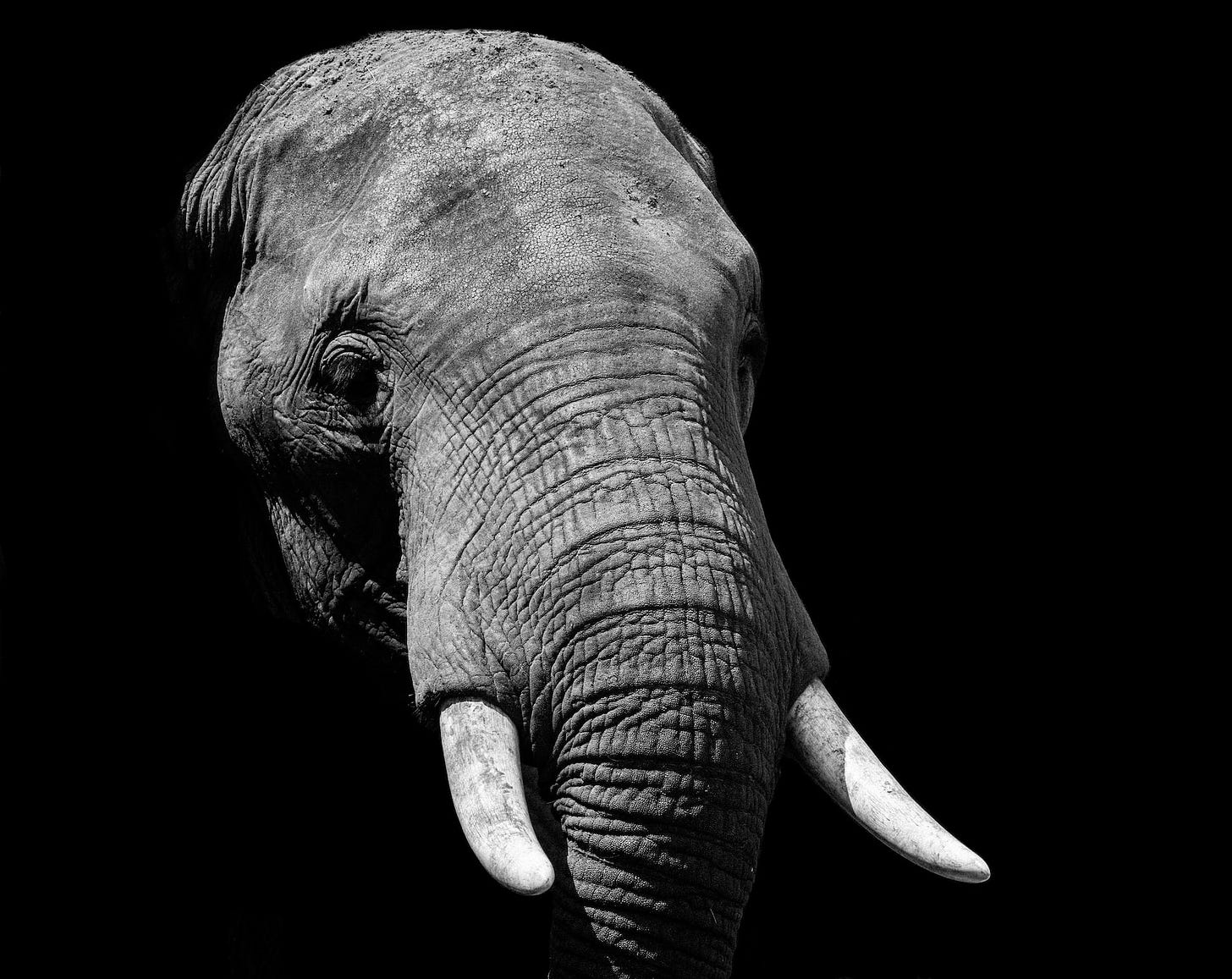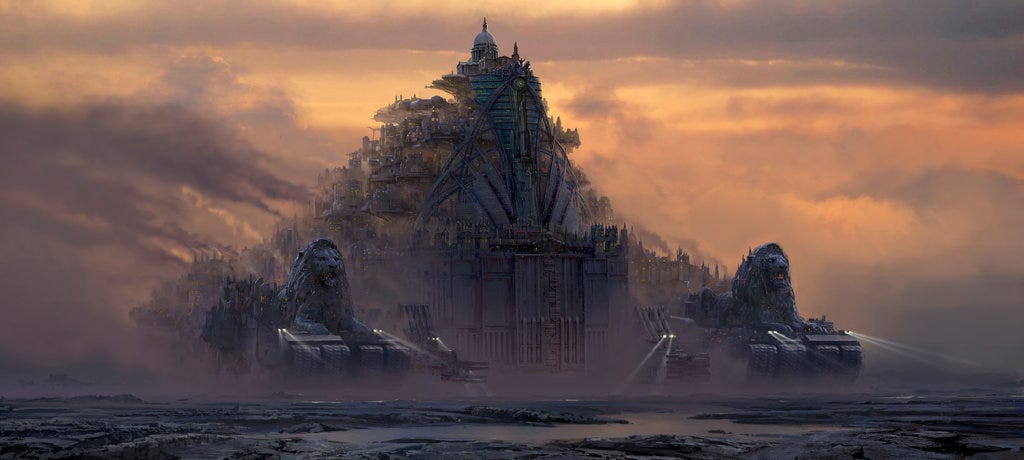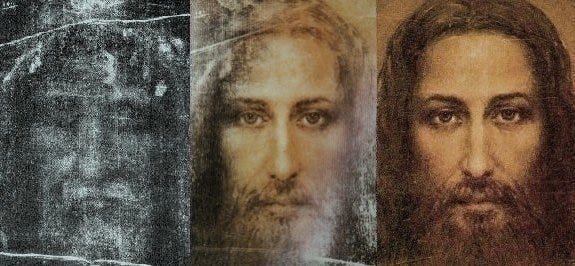Blind leading the Blind? Christianity and the Glimpse of Parousia
This morning I was gripped by a twist on an old memory. An old story of blind sages fumbling round an elephant, each decrying the other for misunderstanding their contribution.
I hold that Christianity is one of these sages, rooted in a specific contribution, certainly a contribution of great and urgent beauty.
But, that contribution makes no sense or help or life without a reverence for the rest of the body.
Growing up, I always enjoyed the (possibly) Hindu story of a cluster of old men, stumbling across an elephant. But being blind, each is only capable of feeling a distinct aspect of its great body. Each assumes they have understood what they have touched, and extrapolate the rest.
The one at the trunk assumes it’s a serpent. The one at the leg believes it is a tree. The one at the ear that it is a massive fan. The tail is a broom. The belly is a wall. The tusk is a spear.
Each one argues that they are correct and the other must be a dullard for missing the obvious. I don’t know if there’s a version of this story where a child blithely comments on the whole reality. Feels like a good ending.
I’ve been haunted by a verse in Sacred Scripture, mouthed by the mystic Paul. In his earlier years, he was a fanatic and fundamentalist, stamping out the Christian followers for not being appropriately Jewish.
And then he himself is battered and blinded by Christ within the followers, a divine Person demanding he re-examine his axioms and identity and mission.
Throwing himself into self-exile and reflective tentmaking, learning from the diaspora of Hebrews, he comes into contact with the traditions that Christ and his followers had restored to life, an ancient tradition that continues to blow around the world. The tradition of the GodMan.
And in one letter, he completely reverses his fanaticism, and asks the Phillipians to celebrate whatever is true, good, noble, beautiful, and worthy.
His own contact with every possible pagan, Christian sect, and Jewish group, showed his incredible flexibility of spirit to see how Christ is in a process of emergence in creation. The incarnation is the full bloom in a single person, and now that Christ is resurrected, exists in a parousia, an indwelling presence – wherever he wills.
Truth is truth, wherever it is found, or whoever says it, because truth is of the Spirit. It is God.
I confess I (and many others) have struggled with this. It’s human nature to assume our tribe, culture, and our mores are the best. We have the light. Everyone else is a mixture of blight and dark, perhaps some dappling light.
We used to talk about the Catholic tradition as a great baptizing tradition, ‘rescuing’ truths and gems from other cultures and hoarding them into our archives, quietly (or loudly) dismissing the rest.
A good visual metaphor is imagining the moving cities from ‘Mortal Engines.’ Imagine Vatican City on tractor treads, rampaging the globe, chewing up and absorbing the good, sifting and excreting the gross.
This is a terrible concept. It is terribly triumphalist and modernist. But it’s a view that’s normalized in some circles.
It assumes that our stage in the spiralling history of Christianity is the best of all past stages, and we have successfully integrated the truths and traditions into a massive monolith, and that we have little to learn from the rest of the world.
And yet… studies in comparative religion, and mere contact with other human beings of other liturgies, show that this is stupid.
We have blindly run away from huge swaths of our own tradition. We’re so emaciated with greed and war and division that we are a pathetic example of the vibrant face of Christ to humanity.
The more I learn about cultures not my own, the more I realise how little I know. How deep and wide they have ploughed their own disciplines. How they have captured an aspect of the Holy Spirit and his inbreathing in their own ways.
I’m stunned at the number of thinkers who contributed stunning and stellar insights to our modern Church – almost all of whom spent time in the East, in non-Christian cultures: Steiner, Merton, Sheldrake, Rohr… and more than I even know.
So I wondered how to think about the Christian cultural contribution to the parousia – since I dont think ‘Christian culture’ is a real thing. We have the Gospel, and we incarnate it in our culture, or the way we live.
I’ve been relying on the tried and true metaphors of salt, light, and yeast from Sacred Scripture. Each of these must be fermented and kaleidoscoped within a context to be visible. Purely on their own, they are ‘inedible to mortal human living.
We humans are meant to dilute and embody and express the nuclear power of the Gospel. Once we do, we find ourselves balloning and blooming from the inside, full of flavor and bringing clarity to our cultures (assuming we’re also doing our own shadow work and conversion…).
Today I was struck by a metaphor that seems distinctly simple and beautiful.
Imagine all cultures throughout time as a series of similarly blind sages. At different times, we stumble across something in our search through the Sacred Sanctum of reality.
One feels a throbbing heart-like warmth in something like a chest, and intuits that a Sacred Love and encircling, inflowing, outflowing, and binding together of being is the source and purpose of life.
Another finds fingers and palms, and holds fast to the intuition that humanity exists to outreach, touch, and define things, to push away and press together, to measure and mold and hold.
Another finds a plane like a foot, and marvels at the message that man stands upon things, separating himself from them, distinct and yet interbeing, rooted in the Heavens like an inverted tree, mobile like an animal, able to flex and grip with a light touch, or harden and become a tool for war.
Another finds the spleen and cleansing organs, and assumes the call of humanity is the dialysis of creation, filtering out the sick and sin, and preparing us for health and harmony, a role of unending service and transformation.
Another presses the great back, bones, and muscles, and wonders at the capacity for man to bear great pressure, to build strength and resilience, to bear loads and grow in responsibility, to shoulder cost and care and creation.
One hears the exhaling and inhaling of breathing, sometimes catching words and singing, and intuits the inhale of inspiration and the exhale of ego, the constant pull and flow with divinity, the tidal diminishing of human living to be more and more filled with life.
One discovers the pelvis, and is humbled at the reality of life-bearing and raising, of expression and creative contribution, of rest and muscled collaboration, of marital sex and sacred matrimony, of the husband outgoing and the bridal welcoming, and the intertidal relationship that blooms life into consciousness.
One of them finds what feels like a human face, and they are rapt at the smile, the kiss, the eyes, the hair and beard, and the whispering words. And a whole religion is formed around the loving, revealed face of God.
Each of these is a human culture, each of them touching the beloved body of Christ moments before his Resurrection, perhaps. Perhaps on Holy Saturday.
The Holy Spirit has guided each one to a specific understanding, probably the one they were already most attuned to. They then develop their felt sense of God and refine and beautify with their creativity.
Its possible that the Hebrew culture as the one most attuned to a face, to personhood, and it is to them that the face appeared. But a head on its own can be monstrous, can become an idol. A head does not exist apart from the rest of a body.
The same with any other organ and part. The obvious call is for all sages to share their intuitions, match them together into a stunning symphony of spirituality, and build up the body of Christ.
But that hasn’t happened.
Many have dug in our heels and our dogmas, and cut off contact and interbeing with others.
It is possible that Christianity was meant to be the great synthezing sage. The one sage that Christ touched with mud and spittle, and brought a glimpse of vision. That flash of sight, or insight, was meant to cause a gasp of joy and shock, to see that we all adored the body of Christ in differing degrees, all within the Sacred Sanctum of the cosmic temple.
The Universal call is to wholiness, wholeness, wholemaking, holiness. We are called to train that ‘eyesight,’ so that it becomes clearer. To see more and more how everything fits together, how one zone finds its purpose in the connection with all other zones, and how they all get up and move together in the service of a living person.
Christ, the Man God for whom all things were created, and in whom we live and move and have our being.
But that transfigured eyesight collapsed back into tribalist identities, and the blind returned to arguing with the blind. Empires and liturgies were crafted and cobbled together around an aspect of the divine being, like a cthonic god who’s body makes up the stars, bones for rocks, blooded water, and haired forests.
We are still too cthonic with our faith, instead of Catholic. Instead of universal.
Sometimes the mystics are granted that sight again. I see our recent band of popes having that insight, especially our Holy Father Pope Francis. Sometimes missionaries in history were more Catholic than colonialist.
But the difficulty of the one who sees the whole is an inability to truly know each of the parts with experience and intimacy.
And that’s why Christians may be in a position to glimpse the map, but we must dive back down to the level we are called to, and bring this gospel to the factions, to our tribes, to ourselves.
We must be models of sharing and learning and creativity. We must know that every good thing is from above, from the Father of Lights.
I think these blind sages stumble into the tomb of Christ on Holy Saturday, moments before his Resurrection. Why? Because that is our phase of humanity in the great story of creation.
We are at the stage of the parousia where hell has been harrowed and emptied across time, and Christ is gathering his body to himself again – all of us – and readying himself to bound into embodied life – with us.
He is not coming on the clouds of Atmosphere, but on the clouds of Heaven. The clouds of Heaven are witnesses, eyes, lives, people. He is here, and constantly emerging with our collaboration.
He is the vine – we are the branches. Perhaps our brothers and sisters in other cultures are the roots and leaves that change reality into food and imaginations and ideas that we all share.
But it is only in the wholemaking of a Person does a body come to life, and the Gospel become a map of hope and dialogue.
Lord Jesus, Son of David, that I may see…





